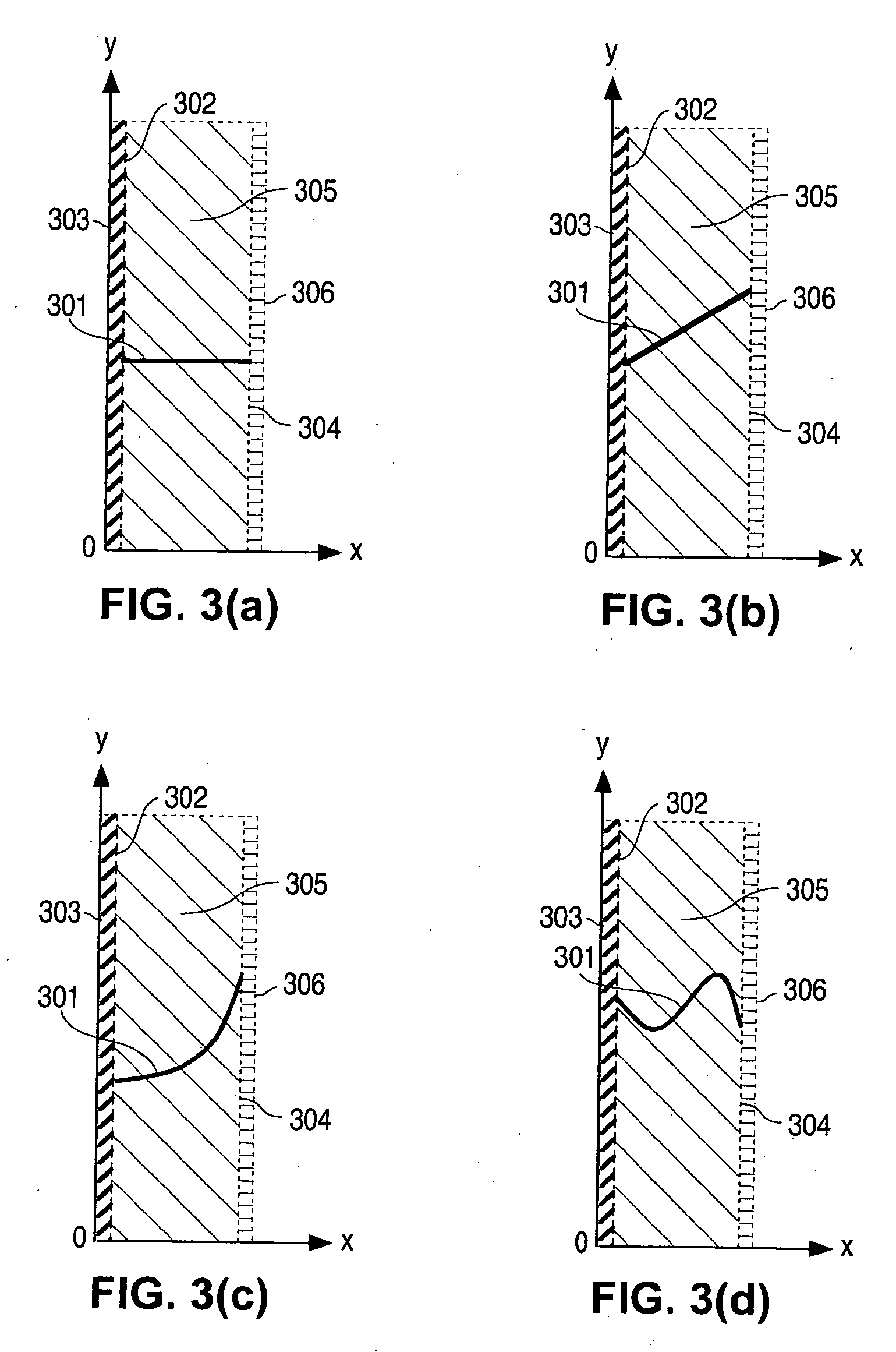Concentration gradient profiles for control of agent release rates from polymer matrices
a polymer matrix and concentration gradient technology, applied in the field of concentration gradient profiles for controlling the release rate of agents, can solve the problems of agents being released, creating adverse effects within subjects, and art has not yet developed a reliable way to control the release profil
- Summary
- Abstract
- Description
- Claims
- Application Information
AI Technical Summary
Problems solved by technology
Method used
Image
Examples
example 1
[0184] A lumped-parameter mass transport model was developed to predict the rate of release of agents from a coating. As described above, it was assumed that the dissolution and diffusion of an agent within a polymeric matrix can be lumped into an effective diffusivity and describes the mass transport of the agent within the coating. It was also assumed that the transport of the agent in the coating may occur through Fickian diffusion, as derived and described above. Using these assumptions, the transport of the agent through a polymeric matrix can be predicted by, for example, the following system of equations: ∂C_∂t_=∂2C_∂x_2IC:C_(0,x_)=f(x_) for 0≤x_≤1BC 1:∂C_∂x_❘t_,0=0;BC 2:∂C_∂x_❘t_,1=-KmLD(KC_❘t_,1-C_❘t_,bulk)
[0185] where, in this example,
[0186] t is time in sec;
[0187] {overscore (t)} is dimensionless time ({overscore (t)}=t / (L2 / D));
[0188] L is a thickness of the coating in cms;
[0189] D is a diffusivity in cm2 / sec;
[0190] {overscore (x)} is a dimensionl...
example 2
[0203] The agent diffusivity in the polymeric matrix provided valuable information for evaluating and predicting the effects of coating design parameters on agent release. FIG. 14 shows the fraction of agent released as a function of time for three different coating configurations according to some embodiments of the present invention. The different coating configurations were (1) a polymeric matrix reservoir (coating containing an agent) with no topcoat 51; (2) the same reservoir with a topcoat 52; and (3) the coating that provided the published experimental data 53 used to fit the model 50. The fastest release rate was observed for the polymeric matrix reservoir with no top coat 51. The addition of the topcoat lowers the release rate by acting as a rate limiting membrane.
[0204] The amount of agent released from a polymeric matrix is designated in FIG. 14 by “M”, and can be measured in vitro in a release medium. In the present example, the release medium was a buffered solution co...
example 3
[0207] Release rates for various IC profiles can be determined from the model calculation, which provides one of skill in the art with a means to design IC profiles within polymeric matrices of choice. The IC profiles described above represent the relationship between concentration and position within a polymeric matrix. In effect, each IC profile is a continuum of changing agent-to-polymer ratios, so an evaluation of the effect of agent-to-polymer ratios can be used to support the premise that control over the shape of an IC profile of an agent within a polymeric matrix can provide control over the release rates of the agent from the polymeric matrix.
[0208]FIG. 15 shows the effect of agent-to-polymer ratios on agent release from a polymeric matrix according to some embodiments of the present invention. A model system with a higher agent-to-polymer ratio 61 has a higher release rate than a model system with a lower agent-to-polymer ratio 62. A model system with lower agent-to-polym...
PUM
| Property | Measurement | Unit |
|---|---|---|
| thickness | aaaaa | aaaaa |
| thickness | aaaaa | aaaaa |
| thickness | aaaaa | aaaaa |
Abstract
Description
Claims
Application Information
 Login to View More
Login to View More - R&D
- Intellectual Property
- Life Sciences
- Materials
- Tech Scout
- Unparalleled Data Quality
- Higher Quality Content
- 60% Fewer Hallucinations
Browse by: Latest US Patents, China's latest patents, Technical Efficacy Thesaurus, Application Domain, Technology Topic, Popular Technical Reports.
© 2025 PatSnap. All rights reserved.Legal|Privacy policy|Modern Slavery Act Transparency Statement|Sitemap|About US| Contact US: help@patsnap.com



